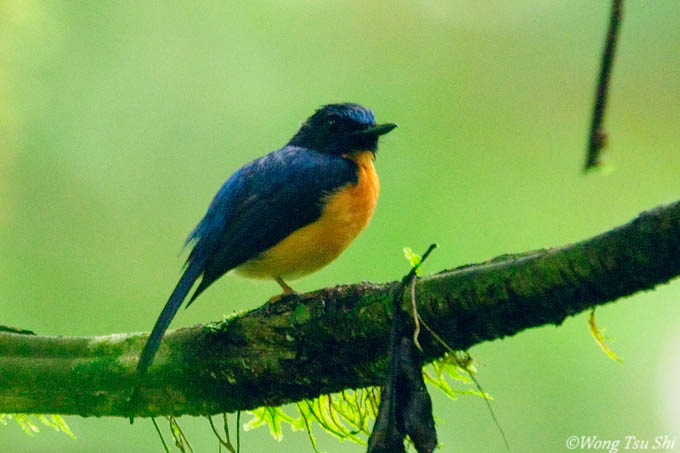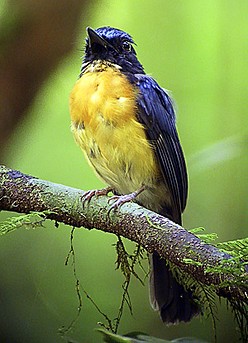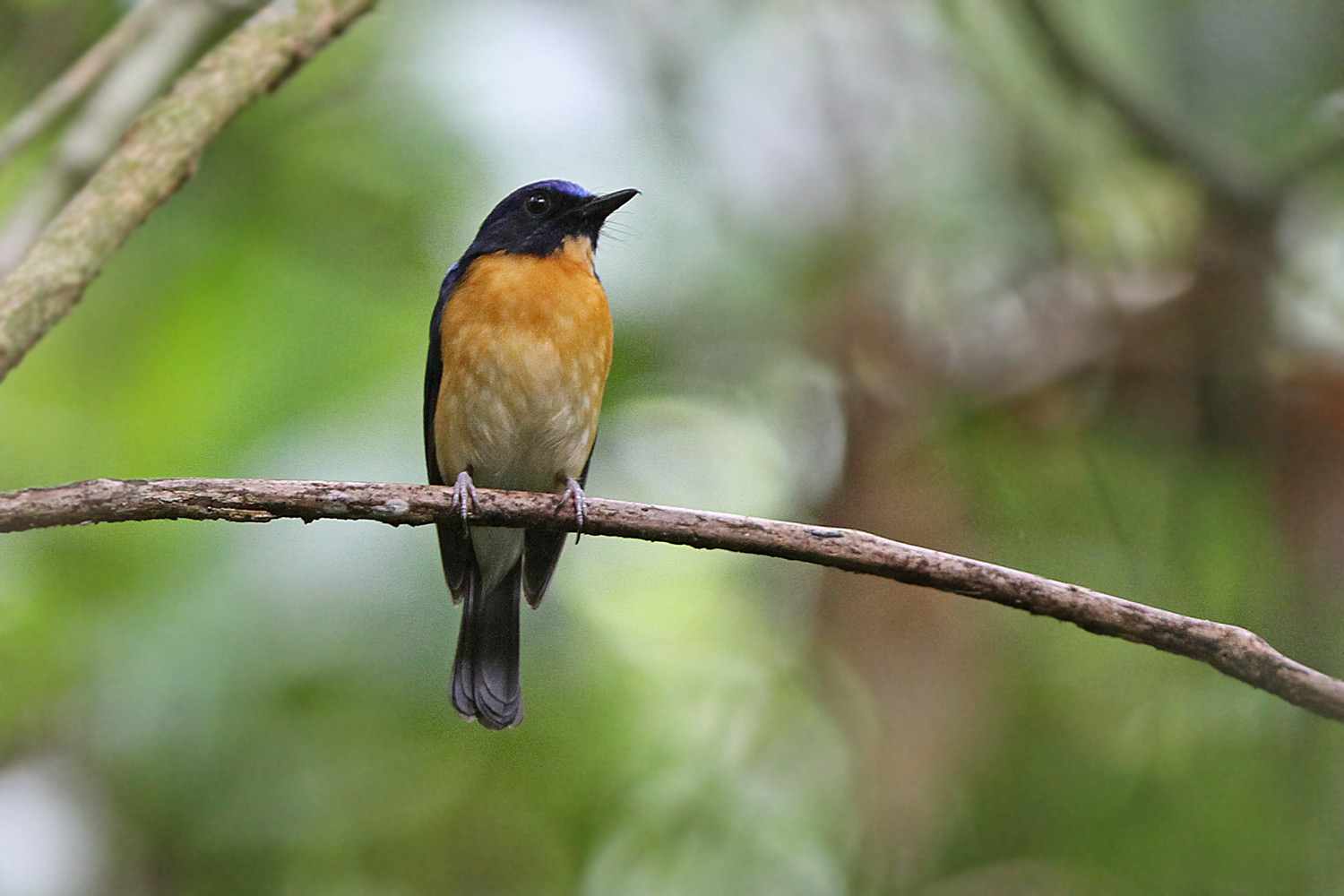
Cyornis caerulatus
SUBFAMILY
Muscicapinae
TAXONOMY
Cyornis caerulatus Bonaparte, 1857.
OTHER COMMON NAMES
French: Bobemouche а grand bec; German: Breitschnabel-
Blauschnдpper; Spanish: Niltava Picuda.
PHYSICAL CHARACTERISTICS
The body length is about 5.5 in (14 cm). The sexes are colored
differently. The male has a dark-blue back, tail, and head, and
an orange belly and throat. The female is brown above with a
blue tail and rump.
DISTRIBUTION
A rare, endemic, nonmigratory species that only occurs on the
Indonesian islands of Borneo and Sumatra.
HABITAT
Inhabits humid lowland and mid-slope, evergreen, tropical forest.
It occurs in densely vegetated habitats within primary, mature
secondary, and selectively logged forest.
BEHAVIOR
A nonmigratory species. Pairs of breeding birds defend a territory.
FEEDING ECOLOGY AND DIET
Searches from a perch for flying insects in middle and upper
parts of the canopy.
REPRODUCTIVE BIOLOGY
Builds a cup-shaped nest in a relatively tall tree.
CONSERVATION STATUS
Vulnerable. An increasingly rare and declining species
because much of its habitat has been lost to the development
of subsistence agriculture, commercial plantations, and
logging. Some of its breeding habitat occurs in various protected
areas, but these places are still being subjected to commercial
logging. Much of its habitat has been degraded by
extensive, illegal fires started to clear the natural forest for
agricultural use. Areas of its critical breeding habitat must be
protected.
SIGNIFICANCE TO HUMANS
None known, except for the economic benefits of birdwatching.
Photo Gallery of - Large-billed blue-flycatcher




 Animalia Life
Animalia Life